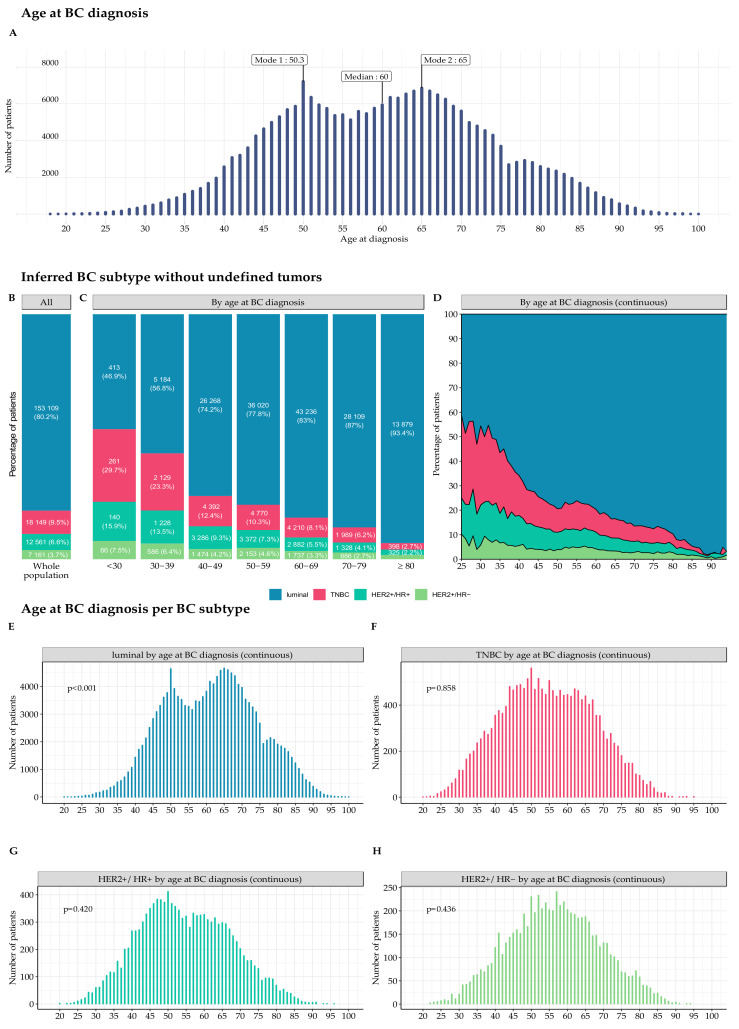Figure 1.
Age at BC diagnosis and inferred BC subtype, by age at BC diagnosis, excluding undefined tumors. (A) Number of patients included in the FRESH cohort, by age at BC diagnosis. The age distribution is bimodal, with two inferred incidence peaks at 50.3 and 65.0 years (p-value for non-unimodality < 0.001). Median age is 60 years; (B) Inferred BC subtype percentages for the whole population, excluding undefined tumors (n = 190,980); (C) Inferred BC subtype percentages per age class at BC diagnosis, excluding undefined tumors. Raw figures for subgroups representing less than 2% of the corresponding age class are not displayed on the graph, to ensure readability. For the group ≥80 years old: n = 259 (1.7%) for the HER2+/HR− group; (D) Inferred BC subtype percentage by age at BC diagnosis, excluding undefined tumors. The cohort is restricted to patients aged from 25 to 94 years (n = 190,816); (E) Age distribution of patients with an inferred luminal subtype tumor (n = 153,109) at BC diagnosis (p-value for non-unimodality < 0.001); (F) Age distribution of patients with an inferred TNBC subtype tumor (n = 18,149) at BC diagnosis (p-value for non-unimodality = 0.858); (G) Age distribution of patients with an inferred HER2+/HR+ subtype tumor (n = 12,561) at BC diagnosis (p-value for non-unimodality = 0.420); and (H) Age distribution of patients with an inferred HER2+/HR− subtype tumor (n = 7161) at BC diagnosis (p-value for non-unimodality = 0.436). Abbreviations: BC = breast cancer; HR+ = hormone receptor-positive; HR− = hormone receptor-negative; TNBC = triple-negative breast cancer subtype; and HER2+ = human epidermal growth factor receptor 2-positive.

